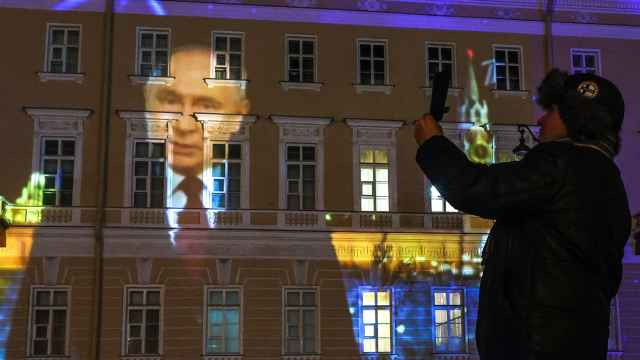BAIKONUR, Kazakhstan — A Soyuz craft launched into the morning skies over Kazakhstan on Sunday, carrying three astronauts on their way to the International Space Station, where they will quickly start preparing for a frenzy of incoming traffic.
NASA astronaut Sunita Williams, cosmonaut Yury Malenchenko and Japan’s Akihito Hoshide were to travel two days before reaching their three colleagues already at the permanent space outpost.
Families and colleagues watched the launch from an observation platform in the Russian-leased cosmodrome in Kazakhstan’s dry southern steppes.
Liftoff took place at the exact scheduled time of 8:40 a.m. local time, sending a deafening roar as the craft gained height.
Despite withstanding intense G-force pressure, the three astronauts looked relaxed in televised footage as they performed a series of routine operations.
The Soyuz jettisoned three rocket booster stages as it was propelled into orbit, which takes just over nine minutes.
At that stage, a doll given to Malenchenko as a mascot by his daughter and suspended over the three astronauts floated out of view on television footage, indicating the craft had escaped the Earth’s gravitational pull.
The shell that surrounds the capsule during the launch phase also peeled away, soaking the astronauts in bright yellow sunshine pouring through the viewing hatches.
The solar arrays that deployed on the Soyuz after orbital entry will provide the craft with the power it needs during its two-day trip.
Williams, tightly squeezed into the cramped craft, gave a thumbs-up sign and waved to onboard cameras as Federal Space Agency chief Vladimir Popovkin congratulated the crew over radio control.
Malenchenko, who is piloting the Soyuz, is one of Russia’s most experienced astronauts and is making his fifth voyage into space.
Williams, who was born in Euclid, Ohio, and raised in Massachusetts, is on her second mission and will further extend the record for the longest sojourn in space for a female astronaut. The 46-year-old astronaut, who is of Indian-American heritage, spent 195 days at the space station in 2006 and 2007.
Sunday’s launch took place on the 37th anniversary of the landmark Apollo-Soyuz mission, during which crafts from the United States and the Soviet Union docked in space, setting a precedent for scientific cooperation between the Cold War foes.
Williams said in a news conference ahead of the launch that the test mission laid the ground for a long-standing friendship and collaboration in the space program.
The Soyuz is scheduled to dock Tuesday with the space station at 8:52 a.m. Moscow time.
Russians Gennady Padalka and Sergei Revin and U.S. astronaut Joseph Acaba, who make up the crew of Expedition 32, have been working at the space station since mid-May.
The space station, which orbits up to 410 kilometers above the Earth, is braced to handle an unprecedented level of traffic.
A Message from The Moscow Times:
Dear readers,
We are facing unprecedented challenges. Russia's Prosecutor General's Office has designated The Moscow Times as an "undesirable" organization, criminalizing our work and putting our staff at risk of prosecution. This follows our earlier unjust labeling as a "foreign agent."
These actions are direct attempts to silence independent journalism in Russia. The authorities claim our work "discredits the decisions of the Russian leadership." We see things differently: we strive to provide accurate, unbiased reporting on Russia.
We, the journalists of The Moscow Times, refuse to be silenced. But to continue our work, we need your help.
Your support, no matter how small, makes a world of difference. If you can, please support us monthly starting from just $2. It's quick to set up, and every contribution makes a significant impact.
By supporting The Moscow Times, you're defending open, independent journalism in the face of repression. Thank you for standing with us.
Remind me later.






